Papers by Letizia Dipasquale

The International Archives of the Photogrammetry, Remote Sensing and Spatial Information Sciences, Jul 24, 2020
The Historic Center (Chorá) of Patmos, located in one of the Dodecanese Islands of Greece, was in... more The Historic Center (Chorá) of Patmos, located in one of the Dodecanese Islands of Greece, was inscribed in the World Heritage List in 1999. The morphological feature, the housing typologies and the building techniques that characterize the Chorá provide an authentic and astonishing expression of the stylistic and typological models of the vernacular architecture of the Greek islands. This paper presents part of the research carried out on the Chorá of Patmos, within the 3D Past project, funded by the European Creative Europe program. The first part illustrates the results of the research concerning the analysis of the material components of the architectural heritage of Patmos: the urban structure, the evolution of the main architectural typologies, the feature of the main building systems. The second part of the paper presents the application of the Heritage Impact Assessment (HIA), a tool for the management of site transformations and in particular for identifying, forecasting and evaluating the impact of potential development on the Outstanding Universal Value (OUV) of the properties. In the case of Patmos the application of HIA can provide an important contribution to manage changes and future transformations in order to preserve the cultural significance of the site and ensure its sustainable development.

The International Archives of the Photogrammetry, Remote Sensing and Spatial Information Sciences, Jul 24, 2020
The old town of Gjirokastra (Albania), was included in the World Heritage List in 2005 thanks to ... more The old town of Gjirokastra (Albania), was included in the World Heritage List in 2005 thanks to the valuable presence of several remarkable examples of Ottoman-styled houses and in the integrity of the vernacular urban landscape. The urban structure is strongly influenced by the orography of the Drino valley and its slopes where the city was founded. Stone is the building material that characterizes the paving of the streets, the walls of the buildings and the roof coverings. The wood, mostly local, was used to build the frame structure of the upper floors and the roofs, in order to provide large windows and bright interior spaces. In December 2018, as part of the activities of the 3D Past project, founded by Eu Creative Europe Programme, Italian and Albanian students took part in a workshop in Gjirokastra. Such an initiative was designed to understand the tangible and intangible components of the vernacular heritage of Gjrokastra. In a multidisciplinary approach, students, professors, researchers and local experts analysed the morphological features of the historic center, the public spaces, and the traditional building systems. Traditional instruments such as the direct survey, the on-site observation and the interviews were adopted in combination with more innovative tools such as the laser scanner and the photogrammetry. This contribution not only illustrates the results of a multi-scale analysis, but it also highlights the transformations and threats that endanger the transmission of the unique characteristics of the city to the future generations. Moreover, it deals with the conservation strategies currently in use and some possible future measures that can contribute to the sustainable safeguard and development of the site.
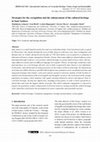
Proceedings HERITAGE 2022 - International Conference on Vernacular Heritage: Culture, People and Sustainability
Sant'Antioco es una pequeña isla situada en el suroeste de Cerdeña (Italia). Históricamente h... more Sant'Antioco es una pequeña isla situada en el suroeste de Cerdeña (Italia). Históricamente ha estado ocupado por fenicios que inicialmente fundaron la ciudad de Sulki a lo largo de su costa sureste, luego cartagineses y romanos más tarde. Finalmente, durante las primeras décadas de 1700, Sant'Antioco fue ocupada por una comunidad de pescadores de origen genovés procedente de Tabarka, Túnez. Estas múltiples influencias culturales han determinado a lo largo de los siglos un patrimonio cultural muy peculiar en un territorio bastante pequeño donde aún hoy en día conviven diferentes costumbres e incluso diferentes idiomas.La historia, la arqueología, la artesanía tradicional, la comida y la música son un rico patrimonio aún vivo, pero aún poco reconocido por los propios habitantes de Sant'Antioco.In this frame, and with the goal of raising awareness on the richness of the local heritage, the Departments of Architecture DIDA (Florence) and DICAAR (Cagliari) have planned sever...

Since 2006, Escola Superior Gallaecia (Portugal), University of Florence (Italy), and Universitat... more Since 2006, Escola Superior Gallaecia (Portugal), University of Florence (Italy), and Universitat Politecnica de Valencia (Spain), with partners as CRAterre-ENSAG (France), the University of Cagliari (Italy), and Ecole d’Avignon (France), have been working together, for the enhancement and protection of vernacular heritage and earthen architecture. As key-institutions in the area, they share high standards and common values, in order to address and achieve fundamental research, capacity building, learning experiences, relevant outcomes, contributing for a broader and deeper knowledge on vernacular heritage and earthen architecture. Several projects were developed among the partners, throughout the years. This was just possible by running together for European Union funded research, and successfully achieving it, by undertaking relevant contribution to knowledge, as well as comprehensive scientific dissemination. This was the case of the following projects: Terra Incognita (2006-2008); Earthen Domes & Habitat – A building tradition between East and West (2008-2010); Terra (in)cognita/Terra Europae (2009-2011: culture-terra-incognita.org); VerSus – From Vernacular Heritage to Sustainable Architecture (2012- 2014: esg.pt/versus); 3DPAST – Living and virtual visiting European World Heritage (2016-2020: esg.pt/3dpast); and VERSUS+ | Heritage for People (2019-2023: esg.pt/versus-plus). Other key-projects have been also developed through National Funding Agencies for Science, Research and Technology as it was the case of: Seismic-V – Local Seismic Culture in Portugal (esg.pt/seismic-v); PRIN – Scientific, experimental and tacit knowledge and conservation actions of Earthen Architectural Heritage in Southern Italy; ResTAPIA – Restoration of rammed earth in Iberia Peninsula (www.restapia. es); SOStierra – Restoration and Rehabilitation of traditional earthen architecture in Iberia Peninsula (sostierra.blogs.upv.es) and RISK-Terra (https://riskterra.blogs.upv.es); among others. The focus of the distinct researches was to address: a state of the art of earthen architecture in Europe (both Terra Incognita projects); to define principles from vernacular heritage that contribute to sustainable architecture (VerSus project & VERSUS+ project); to enhance the quality of vernacular architecture and its World Heritage character (3DPAST); to distinguish seismic retrofitting in vernacular architecture, in order to pro-actively strength dwellings facing earthquakes (Seismic-V).
Università degli Studi di Firenze, 2021
Mediterra 2009. Prima Conferenza Mediterranea sull'Architettura in Terra Cruda, 2009
The medina of Chefchaouen represents an architectural heritage of great value and its building cu... more The medina of Chefchaouen represents an architectural heritage of great value and its building culture constitutes a repertoire of knowledge to be safeguarded as an expression of cultural diversity in the relationship between society and nature. The volume presents the results of an in-depth research on the knowledge system that constitutes the local building culture of the medina, highlighting the characteristics of the construction systems, the risks to which the traditional heritage is subject, and its contribution to the development of a sustainable habitat. The book addresses the theme of the built heritage of the medina with an interdisciplinary approach, which includes architecture as part of a system that has to be studied along with the natural, social and cultural contexts.
Libro De Actas Del Iv Congreso Internacional De Patrimonio Cultural Y Cooperacion Al Desarrollo 16 17 Y 18 De Junio De 2010 Sevilla 2010 Isbn 978 84 482 4011 0 Pags 91 98, 2010
Seismic Retrofitting: Learning from Vernacular Architecture, 2015
All rights reserved. No part of this publication or the information contained herein may be repro... more All rights reserved. No part of this publication or the information contained herein may be reproduced, stored in a retrieval system, or transmitted in any form or by any means, electronic, mechanical, by photocopying, recording or otherwise, without written prior permission from the publishers. Although all care is taken to ensure integrity and the quality of this publication and the information herein, no responsibility is assumed by the publishers nor the author for any damage to the property or persons as a result of operation or use of this publication and/or the information contained herein.

Vernacular architecture represents a great resource that has considerable potential to define pri... more Vernacular architecture represents a great resource that has considerable potential to define principles for sustainable design and contemporary architecture. This publication is the result of an overall aim to produce a valuable tool for analysis regarding vernacular heritage through different assessments, in order to define principles to consider for sustainable development. This was possible through a comprehensive reflection on the principles established and the strategies to recognise in different world contexts. The present publication was the result of an in-depth approach by 46 authors from 12 countries, concerned with the analysis and critical assessment of vernacular heritage and its sustainable perspective. The book presents 8 chapters addressing operational definitions and synopses advances, regarding the main areas of vernacular heritage contribution to sustainable architecture. It also presents 15 chapters and 53 case studies of vernacular and contemporary approaches i...

Proceedings HERITAGE 2022 - International Conference on Vernacular Heritage: Culture, People and Sustainability
Vernacular architecture provides extraordinary technological and typological solutions, which are... more Vernacular architecture provides extraordinary technological and typological solutions, which are the result of a complex system of knowledge that has evolved through trial and error, in a deep connection to the environmental, social, economic and cultural contexts. The goal of the study presented here is to propose a tool able to organise vernacular knowledge, both tangible and intangible, by systematising principles, strategies, design models and solutions in order to be more easily shared, transmitted and employed in the design of new sustainable architecture. The tool, which is developed as part of the project "VerSus+ / Heritage for People" (Creative Europe Program), is a collaborative Web Application able to map solutions and models from vernacular architecture, and to associate and classify them with sustainable strategies. In addition to physical objects (cultural landscapes, urban, typological and technological solutions), the App will also map the people involved...

Proceedings HERITAGE 2022 - International Conference on Vernacular Heritage: Culture, People and Sustainability
The historical settlement system of the Mugello mountain in Tuscany is characterised by scattered... more The historical settlement system of the Mugello mountain in Tuscany is characterised by scattered rural stone villages and houses. In the past these villages housed communities mainly dedicated to the centuries-old cultivation of chestnut. The process of abandonment can be traced back between the 50s and 60s, when the inhabitants left these isolated places to head towards the cities in search of better economic and living conditions. This paper illustrates the research carried out on three abandoned settlements in the municipality of Firenzuola, with particular reference to the Santerno valley. Pratalecchia, Brento Sanico and Castiglioncello were taken as case studies to carry out a typological and constructive analysis, comprising conservation state and vulnerability maps of their vernacular heritage. The first part of the investigation analyzes the context and the environmental resources; identifies the characteristics of the recurring architectural types; and operates a classific...


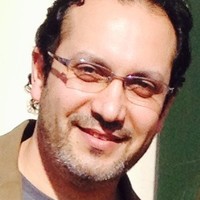
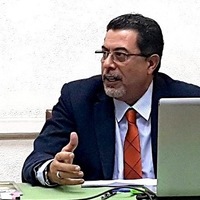

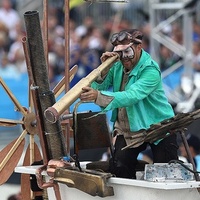




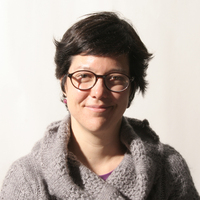
Uploads
Papers by Letizia Dipasquale
have developed strategies for managing such a risk, adapting all available resources for creating earthquakeresistant
rules, shaping not just a particular building culture, but a complex local seismic culture. Over the
centuries, the Mediterranean area has known an unequalled variety of building experiences thanks to the continuous
exchanges and the dissemination of innovative solutions. The paper investigates and analyses the contribution
of Mediterranean local building culture in the strategies of defence against earthquakes, through
their conditions, logic and specific devices. This text presents those technical building devices, which are
strictly connected to the local seismic culture, describing the techniques used to reinforce and to absorb loads
horizontally in earthen, stone, and brick masonries.
John Hurd, President of ICOMOS International Scientific Committee for Earthen Architecture, Lincolnshire, Great Britain
In that aim, a European project was implemented in 2006-2007 making a state of the art of earthen architecture in Europe, particularly in France, Italy, Spain and Portugal. In order to complement these results at the scale of the European Union and to ensure a widest dissemination, the project ‘Terra InCognita – Earthen Architecture in Europe’ was launched from 2009 to 2011.
The aims of this last research project were challenging: a scientific publication gathering the contributions of authors from the 27 European Union countries; an updated European Atlas concerning traditional earthen techniques; a scientific exposition and a photography exhibition, a European label, as well as a comprehensive website
(www.culture-terra-incognita.org). The research project also initiated the launch of a European network during a symposium held in Marseille (4-6 May 2011).
This paper presents the results of the Terra InCognita project, as well as a reflection concerning the relevancy of this kind of research initiatives, as they can contribute for the advancement of knowledge regarding earthen heritage, as well as the establishment of strategies to protect earthen heritage.